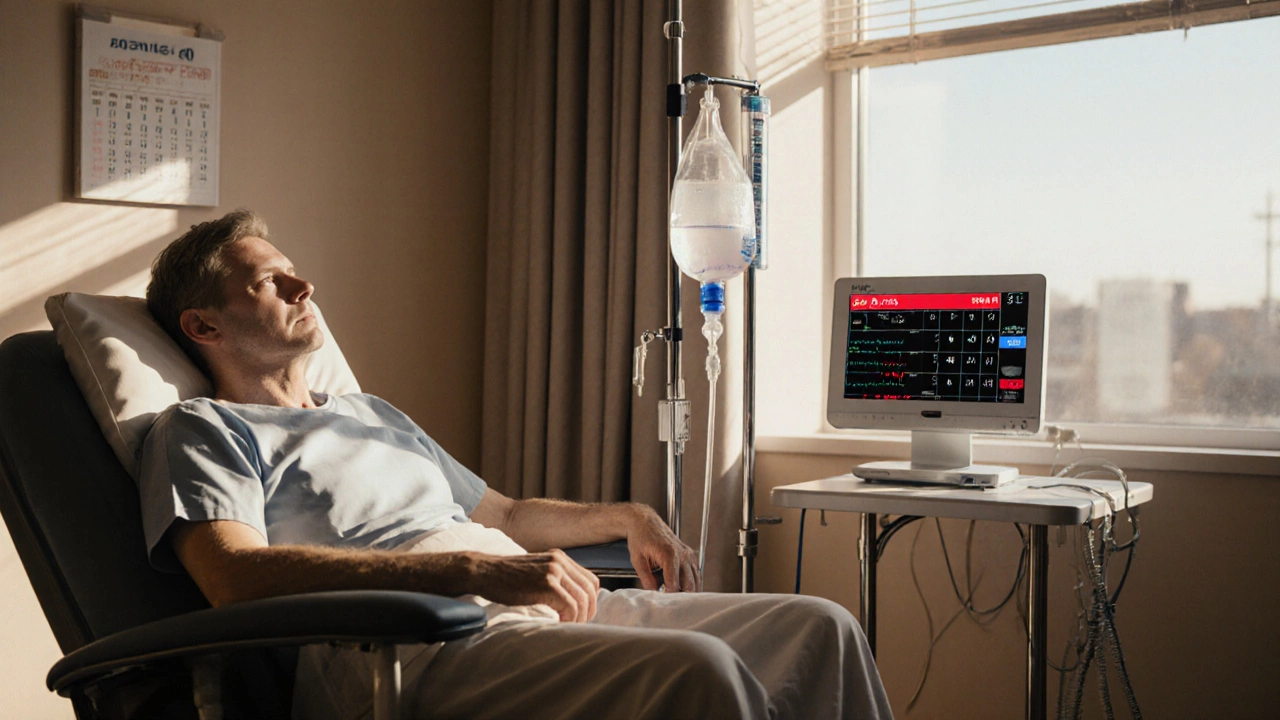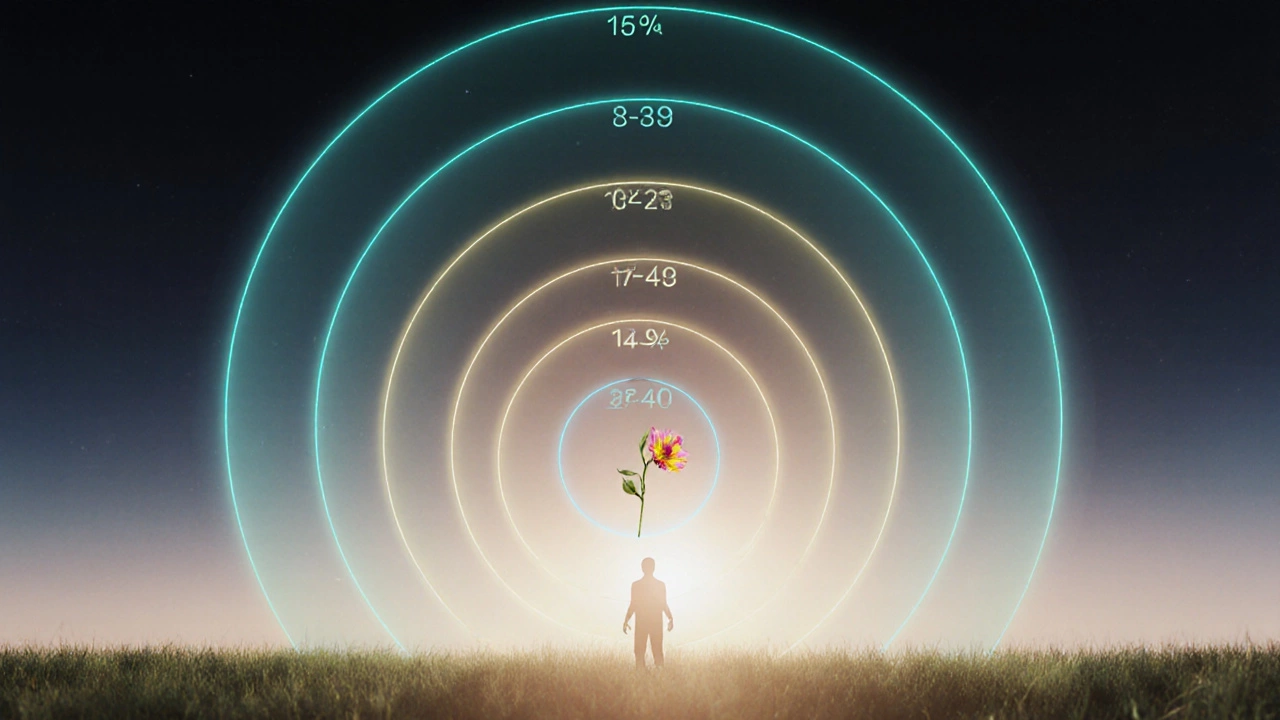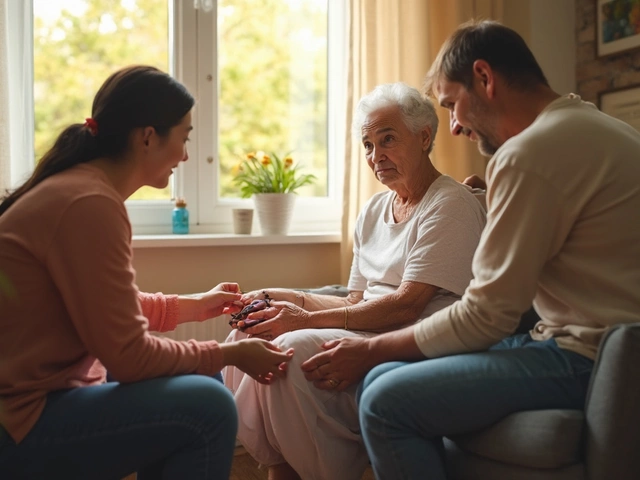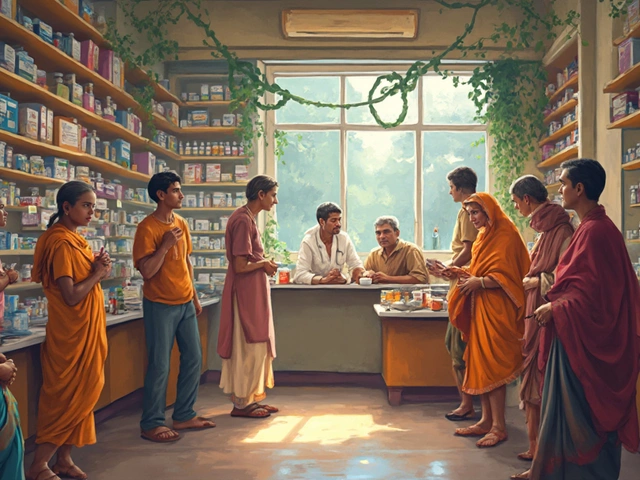- Home
- ::
- Is 4 Rounds of Chemo a Lot? Understanding Chemotherapy Cycles

Is 4 Rounds of Chemo a Lot? Understanding Chemotherapy Cycles
Chemotherapy Cycle Calculator
Treatment Plan Summary
Key Takeaways
- One "round" or "cycle" of chemotherapy usually lasts 2‑4 weeks and includes a drug infusion followed by a recovery period.
- The typical number of cycles varies by cancer type, stage, and treatment goal - it can be as few as 3 or as many as 12.
- Four cycles is common for many curative regimens, but whether it feels "a lot" depends on individual response and tolerance.
- Side‑effects tend to peak after each cycle; managing them early can improve quality of life.
- Talk openly with your oncologist about the plan, possible adjustments, and supportive resources.
When doctors talk about "four rounds of chemo," they’re really talking about Chemotherapy is a treatment that uses anti‑cancer drugs to stop or kill cancer cells. Each round, often called a Cycle refers to a single treatment period followed by a rest phase that lets the body recover before the next dose. The length of a cycle depends on the drug schedule - some are given every 2 weeks, others every 3 weeks.
What Does a Typical Chemotherapy Cycle Look Like?
Most cycles follow a simple rhythm:
- Day 1: The oncologist administers the drug infusion, which can last anywhere from a few minutes (oral pills) to several hours (IV).
- Days 2‑7 (or longer): Your body processes the drugs. Blood counts are monitored, and side‑effects like nausea or fatigue may appear.
- Rest period: No further chemotherapy is given until the next scheduled day. This break lets healthy cells bounce back.
Depending on the regimen, a cycle can be 2, 3, or 4 weeks long. That’s why four cycles often translate to 8‑16 weeks of treatment.
How Many Cycles Do Different Cancers Usually Need?
Because cancer isn’t a one‑size‑fits‑all disease, the number of cycles changes a lot. Below is a quick snapshot of common cancers and the typical range of cycles used in curative (or long‑term control) settings.
| Cancer Type | Common Regimen | Typical Cycle Range |
|---|---|---|
| Breast cancer | AC (Adriamycin + Cyclophosphamide) then Taxane | 4‑8 cycles |
| Colon cancer | FOLFOX or CAPOX | 8‑12 cycles |
| Lung cancer | Platinum‑based doublet | 4‑6 cycles |
| Non‑Hodgkin lymphoma | CHOP | 6‑8 cycles |
| Acute leukemia | Induction + Consolidation | 2‑4 intensive cycles (followed by maintenance) |
Notice that many solid‑tumor protocols settle around 4‑6 cycles. That’s why hearing "four rounds" can feel familiar, especially for early‑stage breast or lung cancers.

Is Four Cycles a Lot? Factors That Matter
Answering "a lot" isn’t just about counting rounds. It’s about the context:
- Treatment goal: Curative intent (trying to erase the cancer) often means a set number of cycles. Palliative intent (relieving symptoms) might stop early if the drugs stop working or side‑effects become too heavy.
- Cancer aggressiveness: Fast‑growing tumors may need higher‑dose or more frequent cycles, while slower cancers could be managed with fewer rounds.
- Patient health: Your age, organ function, and baseline blood counts affect how many cycles you can tolerate. A healthy 45‑year‑old might breeze through four cycles, whereas an older patient with kidney issues could need dose reductions or fewer cycles.
- Drug toxicity profile: Some drugs (like high‑dose methotrexate) cause severe side‑effects, prompting doctors to limit cycles. Others (like hormonal agents) can be continued for years.
So, four cycles can be "a lot" for someone who experiences intense nausea, neuropathy, or fatigue after each round, but it can be just the right amount for a patient whose cancer shrinks dramatically after the second cycle.
What to Expect During Each Cycle
Understanding the timeline helps you plan daily life and reduces anxiety.
- Pre‑treatment check: Blood work (full blood count, liver/kidney tests) confirms you’re fit for the next dose.
- Infusion day: You’ll sit in a chair, get IV lines, and watch the timer. Many clinics play music or offer Wi‑Fi to pass the time.
- Immediate side‑effects: Nausea, mild fever, or sore veins can happen within the first 24‑48hours.
- Recovery window: Fatigue peaks around day 7‑10. It’s a good idea to schedule light activities, keep hydrated, and get extra rest.
- Follow‑up labs: On day 10‑14, the team checks blood counts. If they’re low, you might get a growth‑factor injection or a short delay.
Repeat this pattern for each of the four cycles, adjusting as needed based on how you feel and what the lab results say.
Tips for Managing Side‑Effects Across Multiple Cycles
Every cycle can be a little battle, but these practical tips have helped many patients keep the quality of life up:
- Nutrition: Small, frequent meals with ginger, bland carbs, and protein can soothe nausea.
- Hydration: Aim for at least 2‑3 liters of water a day unless your doctor says otherwise.
- Movement: Light walks, stretching, or yoga improve circulation and reduce fatigue.
- Medication: Anti‑emetics (like ondansetron) before infusion, and pain relievers for neuropathy as prescribed.
- Support networks: Connect with a Support group-online forums or local cancer charities can share coping tricks and moral boost.
- Mindfulness: Breathing exercises or short meditation sessions lower stress and improve sleep.

When to Talk to Your Oncologist
If any of these happen, flag them early:
- Blood counts stay low for more than a week. \n
- Persistent fever over 38°C (100.4°F).
- New or worsening neuropathy that interferes with daily tasks.
- Emotional distress that feels unmanageable.
Doctors can adjust dose, switch drugs, add growth‑factor support, or even pause treatment. Open communication keeps the plan flexible and patient‑centered.
Bottom Line: Four Cycles Is Common, Not Universally "Too Much"
In many curative protocols, four cycles sit right in the middle of the recommended range. Whether it feels overwhelming hinges on your individual tolerance, the specific drugs used, and the goals of therapy. By knowing the cycle rhythm, monitoring side‑effects, and staying in touch with your oncology team, you can navigate those four rounds with confidence.
Frequently Asked Questions
What does a "cycle" of chemotherapy actually mean?
A cycle is a single round of drug administration followed by a rest period that allows healthy cells to recover before the next dose. The length varies - most cycles are 2‑4 weeks long.
Is it normal to feel sick after every cycle?
Feeling nauseous, tired, or having low blood counts after each cycle is common, but the severity differs by drug and personal health. Medication, diet, and supportive care can reduce these effects.
Can doctors change the number of cycles once treatment starts?
Yes. If scans show the tumor shrinking faster than expected, the plan might be shortened. Conversely, if the cancer isn’t responding, additional cycles or a different regimen may be added.
What are the most common side‑effects across four cycles?
Typical side‑effects include nausea, hair loss, fatigue, low blood counts, and mild neuropathy. Managing them early with anti‑emetics, nutrition, and rest can keep them from worsening.
How can I stay positive during a multi‑cycle chemo plan?
Joining a support group, keeping a daily gratitude journal, and setting small, achievable goals each week help maintain a hopeful mindset.

 Health and Wellness
Health and Wellness





Write a comment